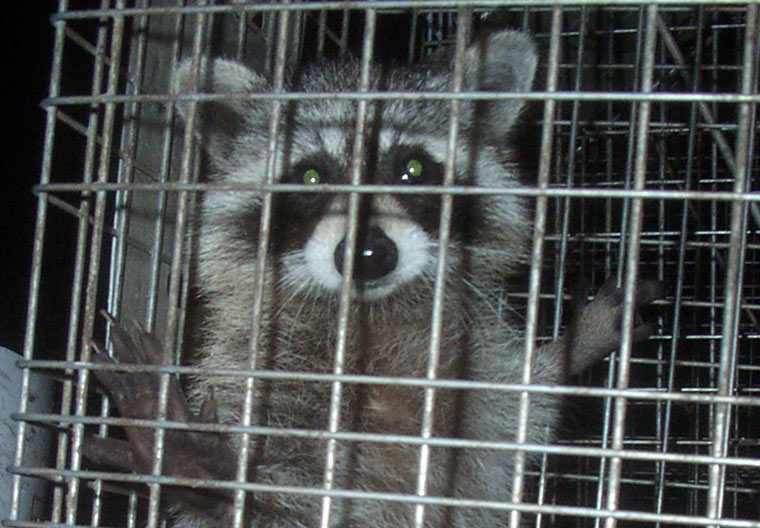- info@wildlife-removal.com
Call us for help in your town
Wildlife Removal Education
What happens to a raccoon after a rehabilitator traps it?
Need raccoon removal in your hometown? We service over 500 USA locations! Click here to hire us in your town and check prices - updated for year 2020.
This is quite the question and the answer will vary greatly, depending on the kind of rehabilitator you are talking to.

The very definition of rehabilitate is:
“To restore (someone/something) to full/as close to full health or normal life by training and therapy after imprisonment, addiction, or illness.”
In short, a wildlife rehabilitator will do whatever is in the best interests of that animal, making sure that it has either a normal life, or as close to a normal life as possible, once it has been released from whatever trap it was caught in. Read more about specific types of traps.
Now, with certain animals, raccoons included, the most humane option doesn’t always feel like the best option. Sadly, even wildlife rehabilitators need to follow the law, even if it means destroying a seemingly healthy animal. With raccoon trapping, that is usually the case — the animal will need to be humanely euthanized. This is mostly down to the fact that raccoons are a very big worry as far as the rabies virus is concerned. They are a very well-known vector across the country and can transmit the virus to people, domestic animals, farm animals, and wild animals alike.
In most cases, a raccoon that appears healthy will still need to be destroyed. The law dictates this, but it isn’t just to keep rabies infections to a minimum; it is also to ensure the best outcome for the raccoon. Wild animals that are trapped and then relocated many miles away don’t usually live for long after they are re-introduced back into the wild. There are too many things working against that released animal, and stress alone can cause it to be vulnerable. Destroying the raccoon is often a much nicer outcome for everyone involved, than knowing that the raccoon found itself under attack from predators, ripped to shreds because it couldn’t find a place of shelter and protection.
Raccoon trapping and removal is a difficult subject in some states, because of the laws that govern those up against an invasion. Luckily, wildlife rehabilitators will have the appropriate insurances and licenses, as well as knowledge of hiding spots, entry points, animal behavior, and even best practices, to ensure that everything is done the right way. Read about 10 Best Raccoon Bait Ideas for Traps.
The right wildlife rehabilitator will ensure the best outcome for the animal, even if it doesn’t sound like the best outcome to you. Sometimes, you need to take a step back and look at the bigger picture.
If you have questions about the wildlife rehabilitation process, we recommend that you pick up the phone and give the experts a call. They will be able to answer your questions, perhaps even putting your mind at ease.
Go back to the Raccoon Removal page, or learn tips to do it yourself with my How to Get Rid of Raccoons guide.


















